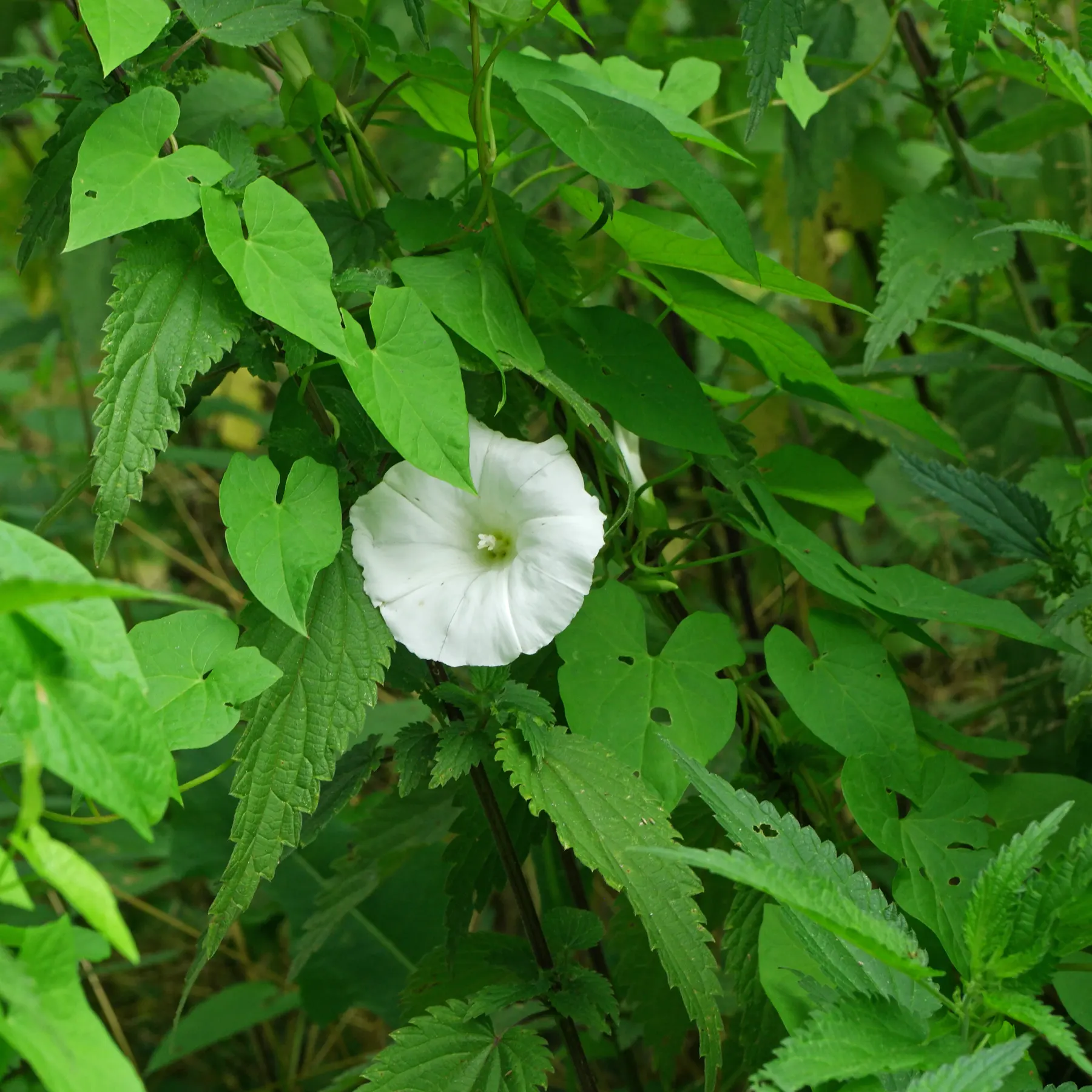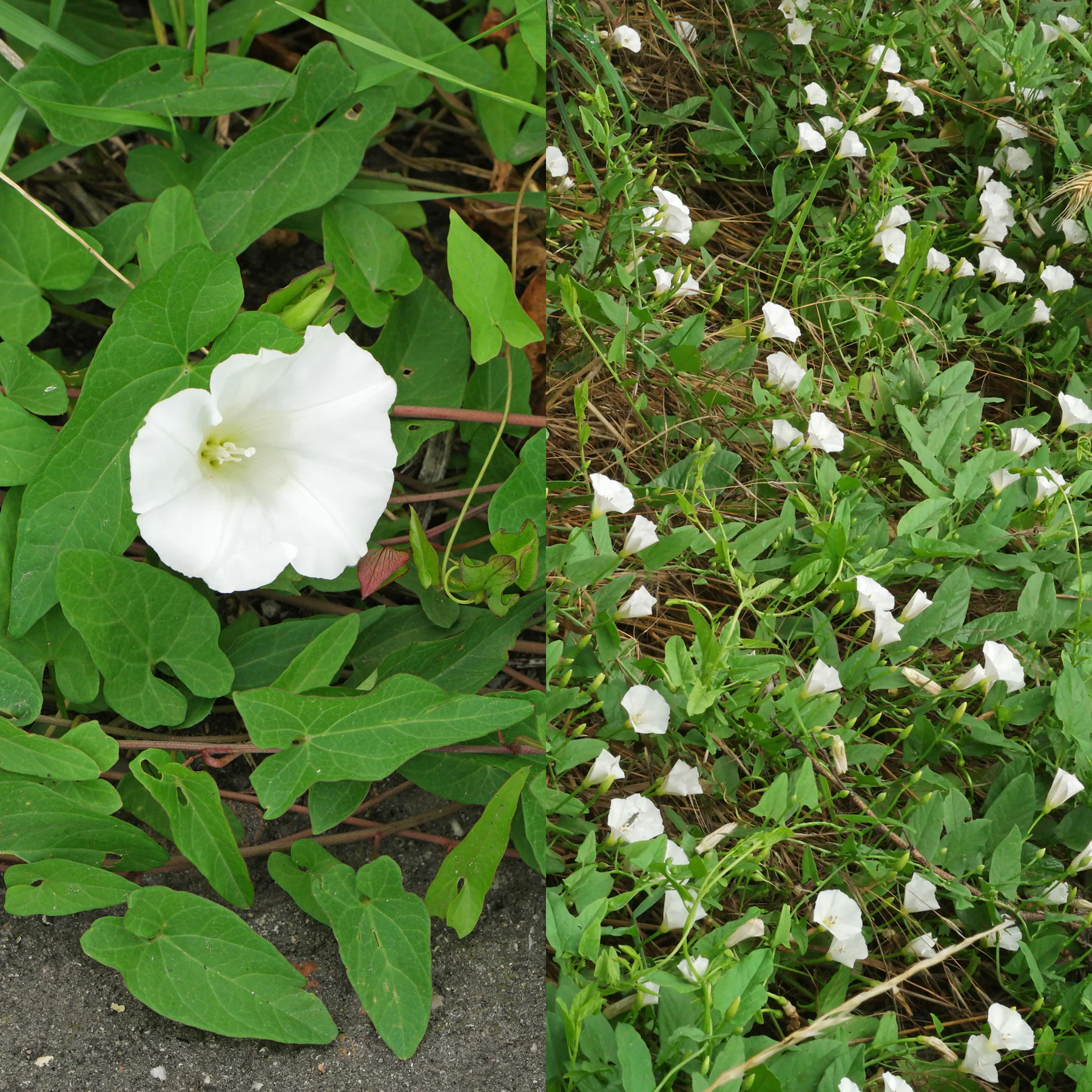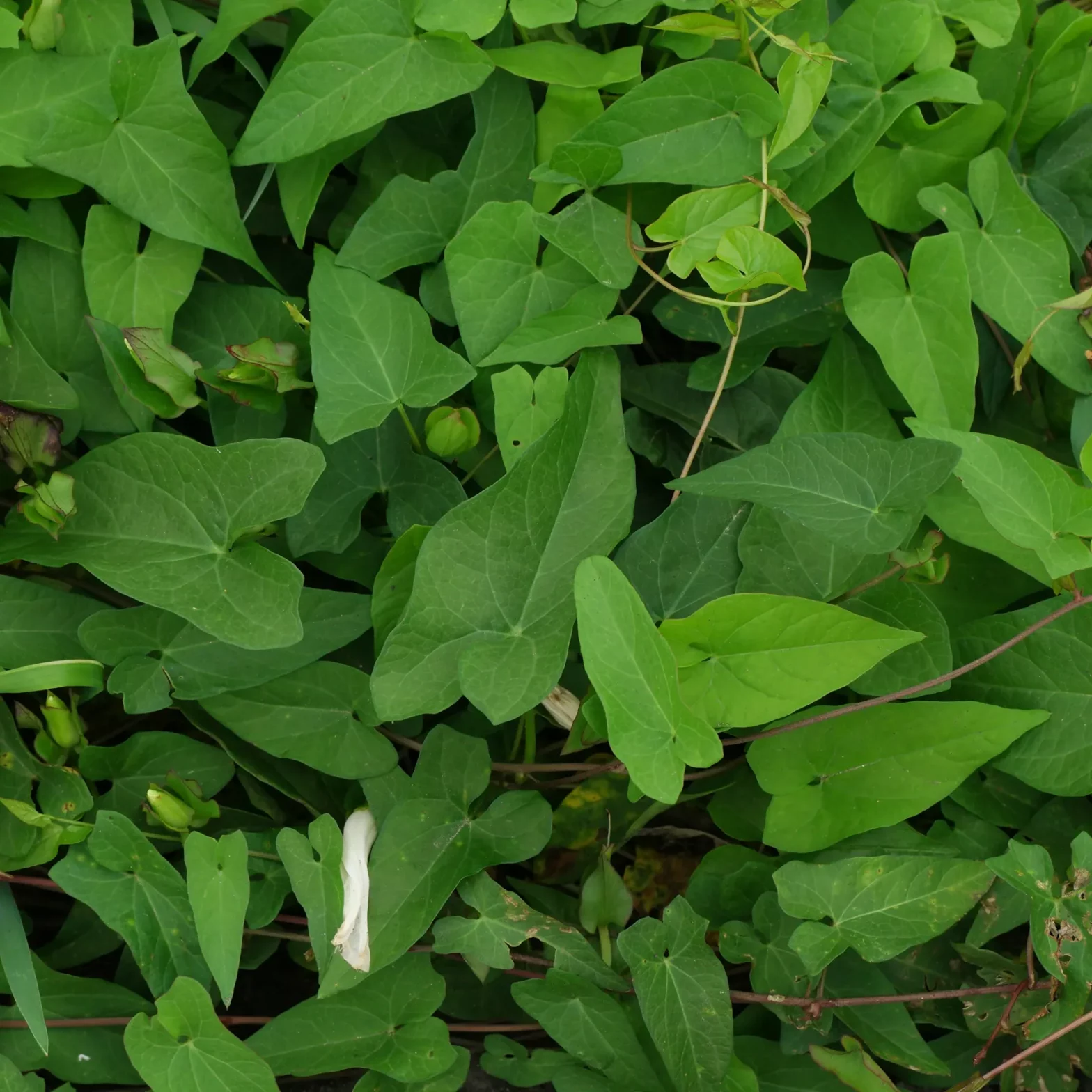Calystegia sepium (hedge bindweed) is a perennial creeping or climbing plant. The stems can grow up to three metres long. It produces funnel-shaped flowers from June to September. They are usually white, but can also be light pink.
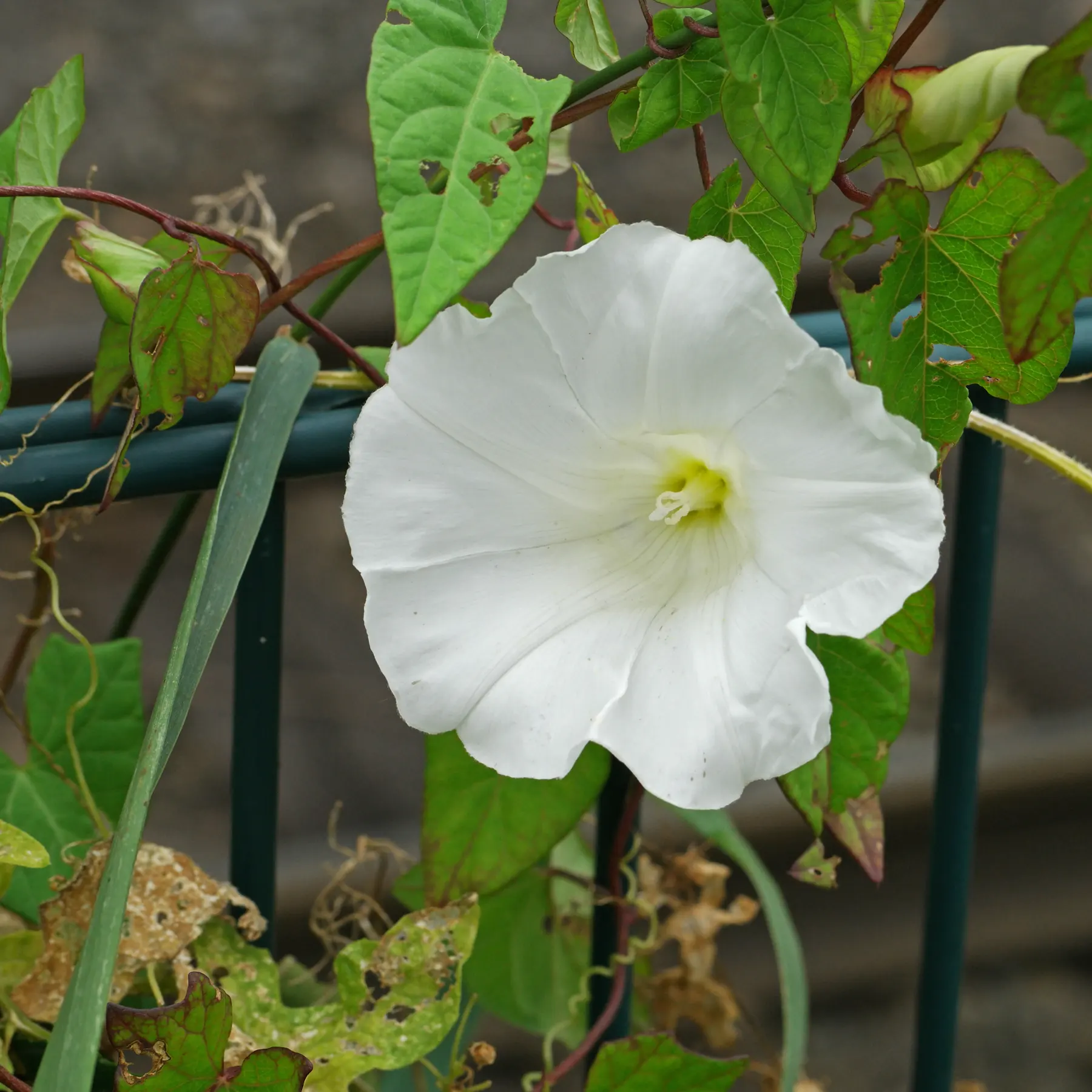
Hedge bindweed spreads by seed and runners. It uses fences and other plants as climbing aids. In fertile soil it can spread rapidly and cover whole fields. It is therefore not a favourite with farmers.
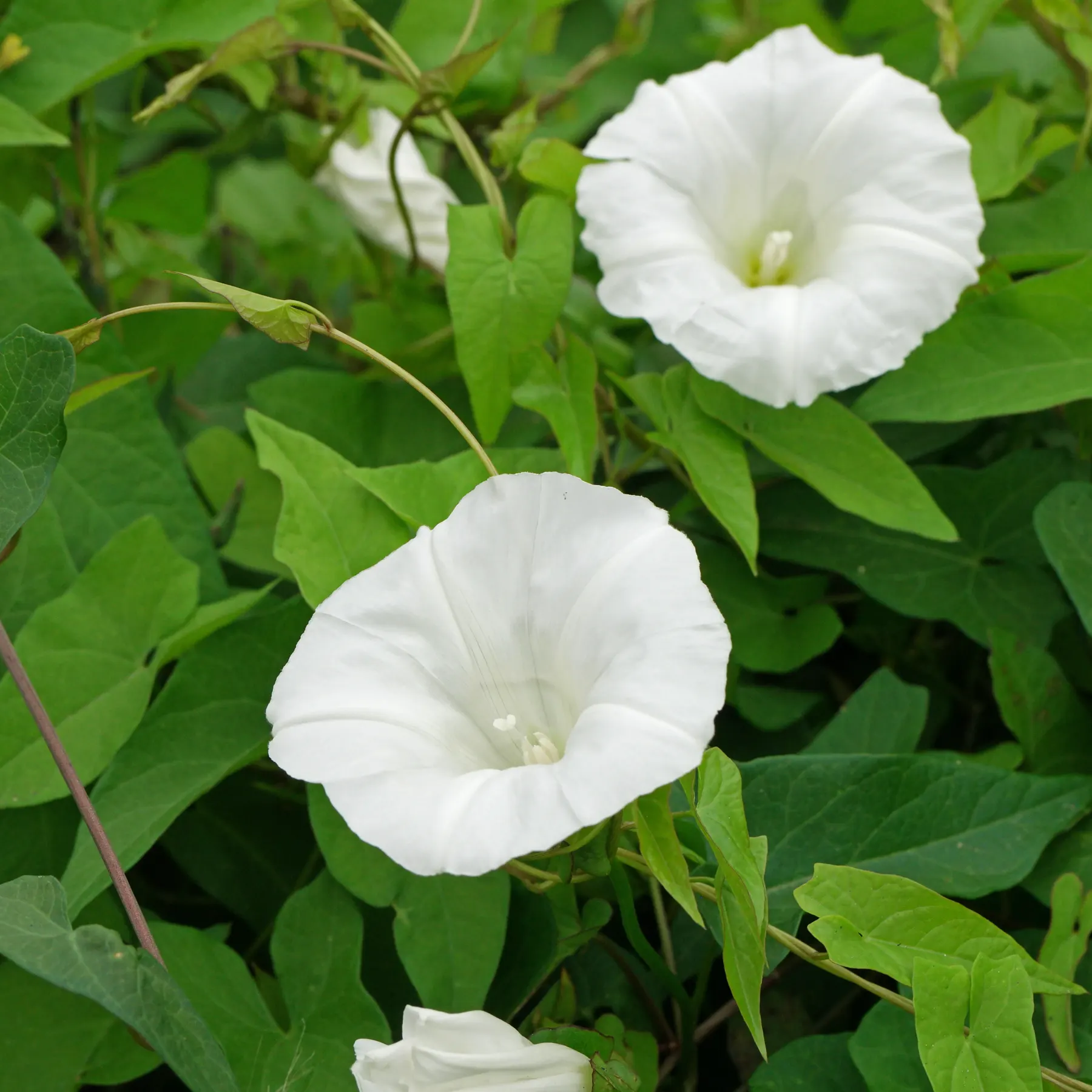
Distribution
The natural range of Calystegia sepium is large. It includes regions in Asia, Australia, Europe, North Africa, North America and South America (source).
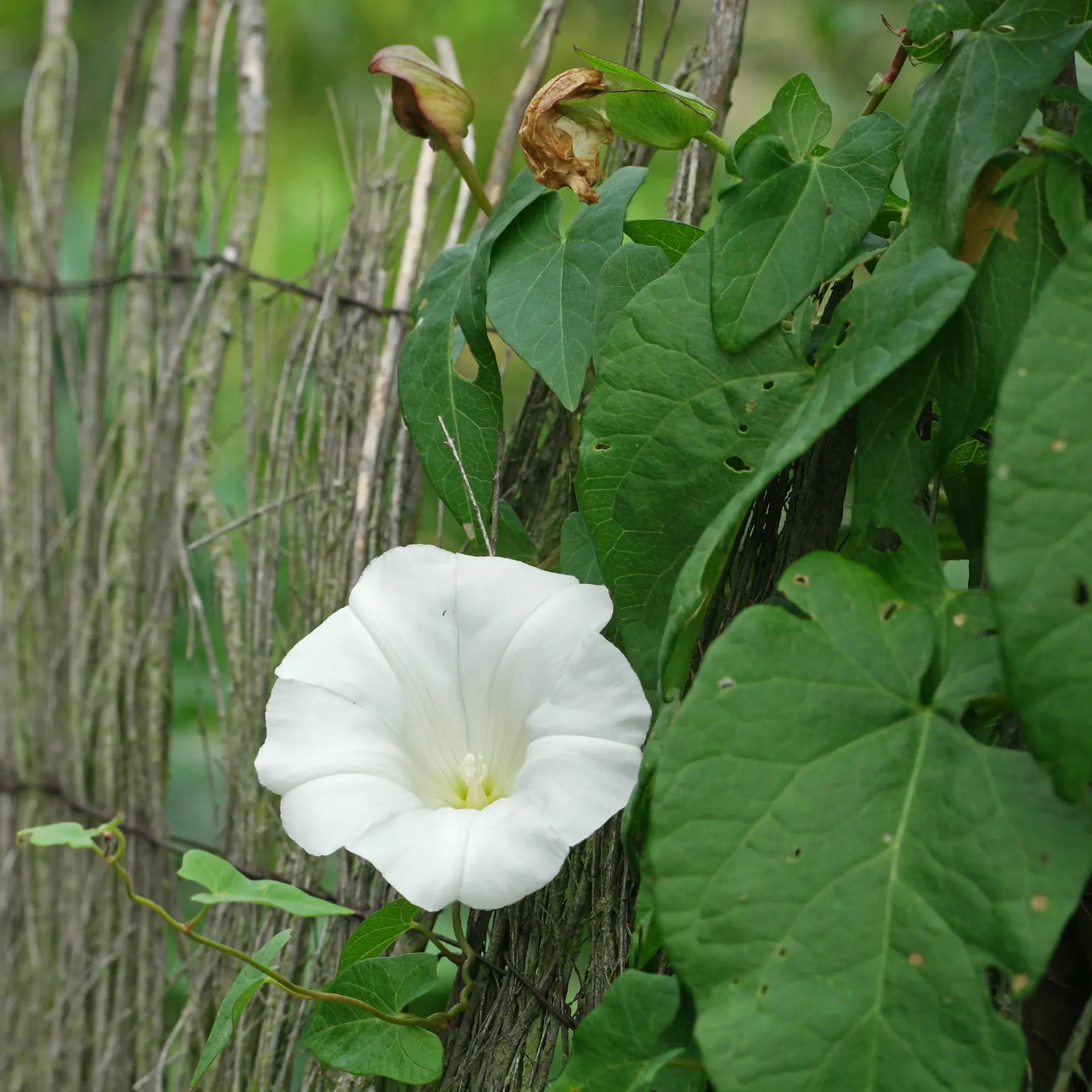
Habitats
Hedge bindweed thrives in cultivated, human-dominated landscapes. It grows in fields, cemeteries, embankments, parks, gardens, roadsides, hedges and bushes.

From my observations it does not tolerate dry places as well as the closely related Convolvulus arvensis (field bindweed), with which it can be seen growing together.
It grows best in evenly moist, humus-rich to slightly loamy soil.
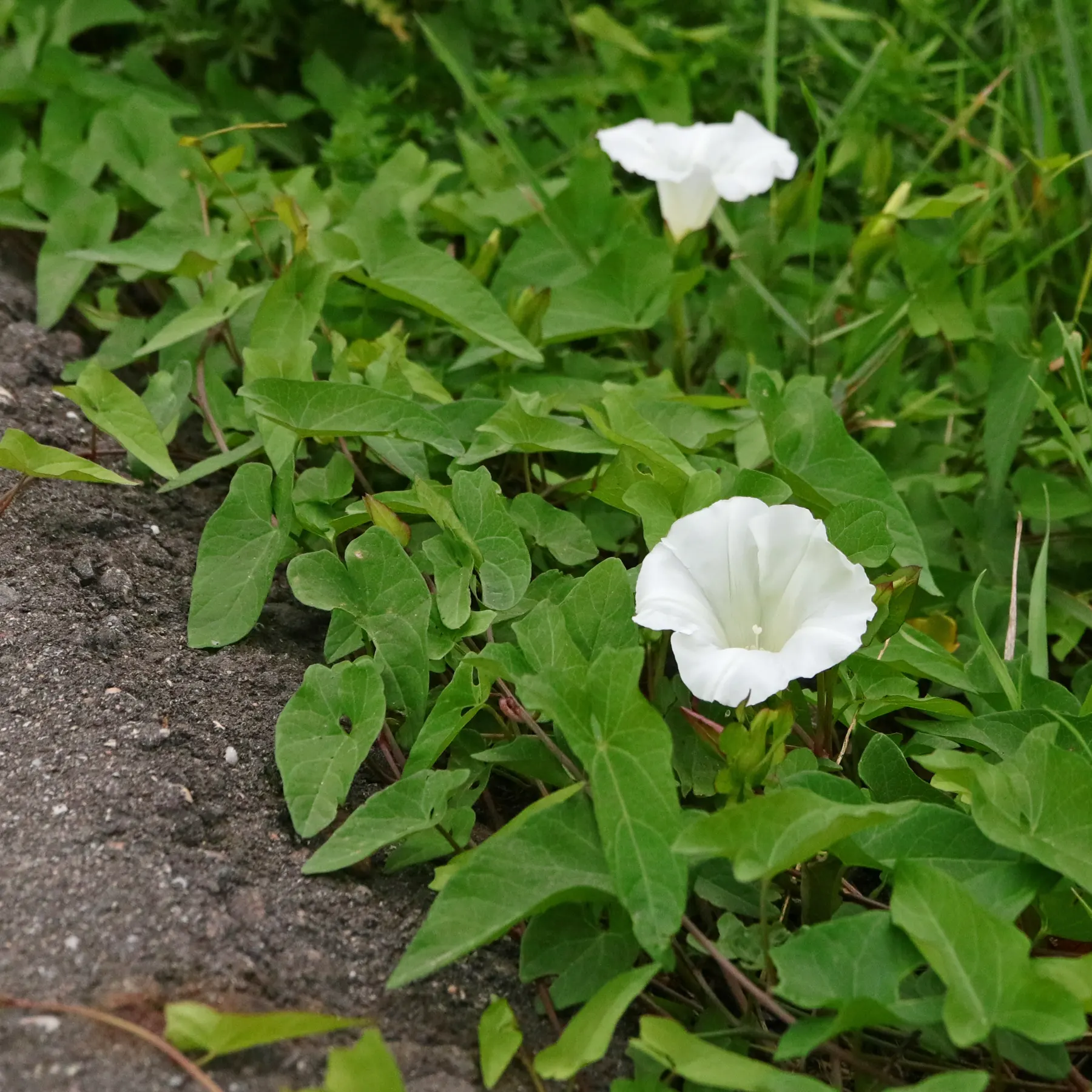
Other common names for Calystegia sepium are Rutland beauty or bugle vine and heavenly trumpets or bellbind such as granny-pop-out-of-bed.
